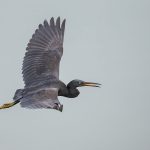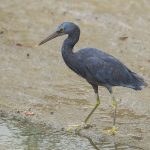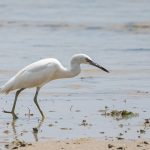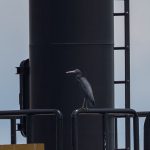The Grey-tailed Tattler (Tringa brevipes) is a medium-sized wader that breeds in northeast Siberia and migrates southward to South-east Asia and Australia post-breeding.
There are two species of tattler birds. The Grey-tailed Tattler and the Wandering Tattler. They both look alike, and both fittingly called tattlers because they have the habit of issuing alarm calls to alert other birds if an observer gets to close. Both these tattlers migrate to different parts of the world, although there are places where they overlap. When they do, the best way to differentiate them is by their call. The Grey-tailed Tattler has a disyllabic whistle, and the Wandering Tattler has a rippling trill.
In Singapore, we only have Grey-tailed Tattlers visiting us. They are classified as rare winter visitors or passage migrants. There are some years where they were not seen at all. Mostly there are only reports of 1-2 birds a year. In recent years, the best place to find this species is at Sungei Buloh Wetland Reserve although in the past, they have been reported at the sandy shores of Changi as well. In 2011, there was a bird in breeding plumage at Sungei Buloh in late August to early September. In 2012, there was no bird reported, and in the previous season in 2013-2104, there was a bird that spent its entire winter months at Sungei Buloh. This season, there is a bird currently at Sungei Buloh.
The Grey-tailed Tattler has almost the same shape and size as the much more abundant Common Redshank and they like to mingle with the Redshanks for protection. However they can be told apart by a few features. Firstly, they have short yellow legs instead of the longer reddish legs of the Redshanks. As with the legs, the bill is also yellowish base. The white eyebrow stripe (supercillium) extends beyond the eye and contrasts with a prominent dark loral stripe which also continues a little behind the eye. This contrast is really apparent compared to the Redshanks. They also have unpatterned, greyish wings and back.
More observations and comments at the photo gallery below.






